There’s a saying that “First impression lasts longer,” and now and then, you discover that if something or someone made a good or bad first impression, you tend to remember it the next time you come in contact with the person or thing.
A value proposition is a brand’s opportunity to make a first impression on potential customers.
In this article, we’ll discuss value propositions, what they are, and how to create solid value propositions that resonate with your customers. We’ll also look at some of the best value propositions that top e-commerce and Saas companies use.
Let’s get to it.
What is a Value Proposition?
A value proposition is a simple statement summarizing the value of using your products or services. It also addresses customers’ pain points and why customers should patronize you instead of your competitors.
Simply put, a value proposition is what a company or brand promises to deliver to customers when they patronize them. It communicates why and for whom a product or service exists in the first place.
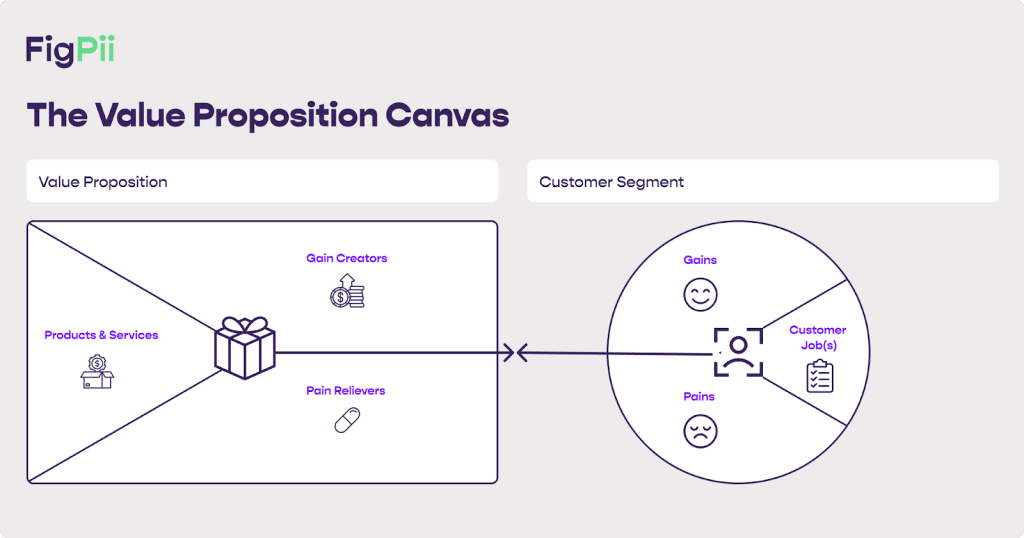
The diagram above is known as a Value Proposition Canvas, a framework that can help you understand customers’ pain points and needs and ensure that your product is designed to resolve their pain points and meet their needs.
The elements in the square diagram explain the prospective value proposition of a product, and the elements in the circle on the right describe the customer profile.
Elements of A Value Proposition Canvas
The goal of the value proposition canvas is to help you create a strong value proposition. This section breaks down the canvas and explains how each term contributes to the value proposition.
Customer Profile
- Gains are benefits, positive experiences, and desires that can encourage potential customers to use your product or service.
- Pains are frustrations and challenges users face when trying to get a job done.
- Customer Jobs refer to the social, emotional, and functional tasks customers try to complete with a product or service.
Value Proposition
- Gain Creators: These are the elements of your products and services that offer to improve user experience.
- Pain Relievers: They focus on eliminating specific user frustrations and challenges.
- Products & Services: What products and services do you offer to help your customers eliminate challenges and create the most gain?
A value proposition helios you to analyze your business strategy, understand core customer needs and see how to improve your products and services better.
When it is evident that your products and services in the value proposition address essential pain points in the customer profile, you can pat yourself on the back for a job well done.
Using the canvas to develop a proposition statement is an iterative process; this means that you can continually refine the value proposition using user feedback and market research until you have something solid.
Importance of value proposition?
We live in a world where customers about how your product or service will solve their pain points. So, by making your value proposition clear, you make it easy for them to make a purchase decision.
And again, in a saturated or fierce market, a strong value proposition can make your brand stand out. Here are some other benefits associated with having a solid value proposition:
- Helps improve the customer-brand relationship.
When your target customers can see the values they stand for in your value proposition, they think and feel like they share a bond with your brand. Creating a great value proposition requires researching customer pain points and needs.
This research helps you understand, and you can better serve your customers and use languages that resonate with them.
Also, customers have many questions they want answers to when trying to purchase a product; the job of your value proposition is to communicate how your product answers their questions.
- Differentiates you from your competitors.
In an oversaturated market, standing out from competitors is critical now that consumers have multiple options. A unique value proposition shows why you’re better than the competition, and this will likely increase your chances of attracting the right customers that your business needs.
- Clarity of brand messaging.
Once you have a solid value proposition, it should inform how your brand communicates to your audience at every point. This means that a well-crafted value proposition gives your brand a solid foundation from which all your communication stems. It also helps you to maintain clarity and consistency in your communication with your customers.
- Attract Quality Leads and Increase Conversion.
When customers understand what your business is all about by looking at your value proposition, they can easily decide whether or not they want to be associated with your brand. This helps you attract the right prospects that are likely to convert into paying customers.
A compelling value proposition should be significant enough to convince a prospect to become a paying customer.
- Creates focus and gives direction to the marketing team.
A value proposition is what your company stands for. Although we’ve reiterated that it’s majorly for your target audience, it’s also vital that everyone across the company, especially your marketing team, understands this.
Your value proposition should always be incorporated into your marketing materials, such as social media posts, emails, newsletters, etc.
Elements of a Solid Value Proposition
Now that you know the importance of having a solid value proposition let’s talk about how to create a killer value proposition and what elements to include.
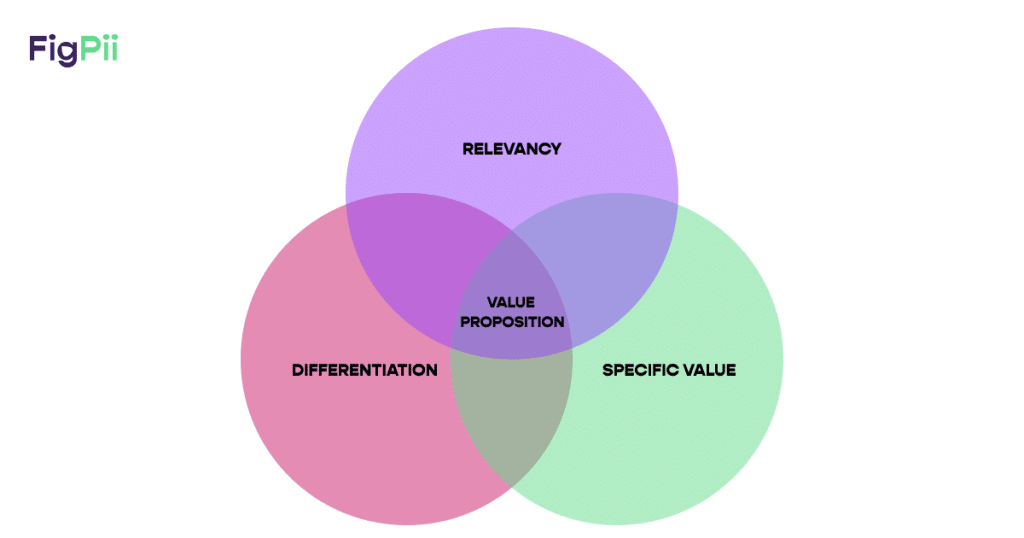
- Relevancy
Apart from generating revenue and growing your business, another important reason your business exists in the first place is to address the needs of a specific target audience, right?
Keeping this in mind, your value proposition must be relevant to the target customers that your business serves. It must explain how it addresses their needs and solves their problems.
One way to ensure that your value proposition is relevant is by clearly understanding who your ideal customer is.
- Specific Value
Another essential element of your value proposition is the specific value that your products and services offer. Your value proposition must explain the key benefits your product or service offers.
- Differentiation
Your value proposition must communicate to your customers why they should choose you and not another brand.
How to Write A Strong Value Proposition With A/B Testing
- Identify Target Audience and Understand their JTBD
Your customers’ pain point is why your product or service exists in the first place. Before creating a great value proposition, you must identify and understand the audience that will benefit from using your product. You should identify demographics such as gender, age, interests, unique challenges, etc.
You also must know the push and pull factors that make your audience prefer buying from you, not your competitors. This is where the concept of Jobs To Be Done (JTBD) comes into play.
RELATED ARTICLE: Using JTBD Interviews To Map Out Your Customers’ Journeys!
The JTBD framework is based on the premise that people hire products to help them do a job. The concept also states that every product has three main jobs: emotional, functional, and social.
Functional jobs are the practical problem that customers are trying to solve. Social jobs explain how customers want to be perceived when they use a product. Emotional jobs describe the customers’ personal feelings when using a product.
Understanding their JTBD helps you craft your value proposition that resonates with your customers on a deeper level.
- Focus on Product Benefits or Features
Identifying your target audience and understanding their pain points, goals and desires are not enough to write a good value proposition. Highlighting the unique features and benefits of your products is also necessary.
Features are what your product and services can do, describing the characteristics that set them apart from your competitors. On the other hand, benefits explain why those features are important and how they can address your audiences’ needs.
When writing your value proposition, you can choose a features-based approach or a benefits-based approach. The former focuses on what your product does, while the latter focuses on how your product makes users’ lives easier and better.
- Explain why benefits and features are valuable to potential customers
Now that you have successfully described your product’s benefits and unique features, it’s important to let your customers know why these features and benefits are valuable.
The next step is to connect product features and benefits to the customers’ needs to see if they make sense; if not, reevaluate your target audience, product benefits, and features to find what’s missing.
- Differentiating Factor
You won’t be the only available provider in the market, and there must be other things that differentiate you from other businesses in the market. Find out what these things are and use them to separate your business from your competitors.
Your value proposition should:
- Address specific user needs
- Be easy to understand
- State how it solves user problems
- Include features that separate you from competitors.
Coming up with a perfect value proposition is not easy; if it were, many brands wouldn’t have difficulty convincing a target customer to patronize them.
Let’s even for a minute assume that you’ve done your research, understand what your customers want, and were able to draft two five value propositions; how do you know which would be most effective in communicating your intent to customers?
A/B Testing
A/B Testing has been around for a while now, and it is mainly used when testing different variations of a website to see which variation performs better.
A/B testing is also an effective way to test your crafted value propositions with your target audience to see which they resonate with the most.
Developing a solid value proposition takes time and effort. You probably won’t get it right the first time. This is why you need to A/B test different variations.
Best E-commerce Value Proposition Examples
Let’s take a look at some of the value propositions used by ecommerce.
-
Recess
“We Made Calm Delicious”
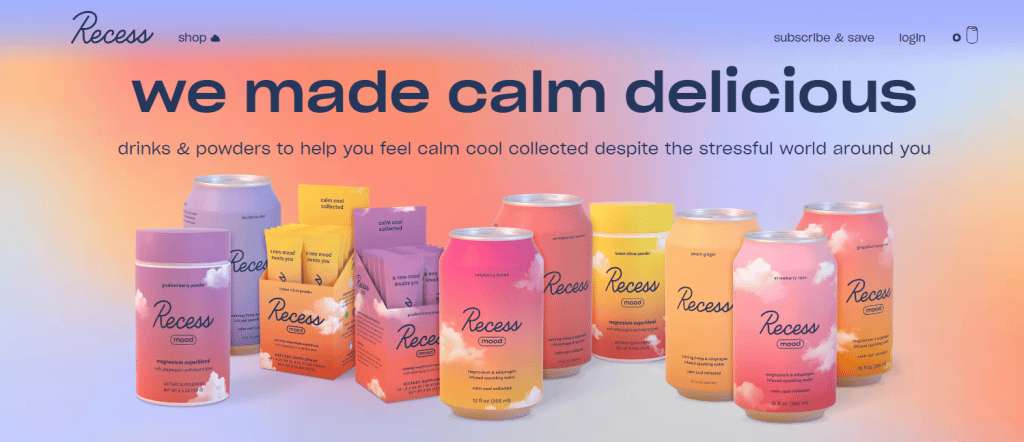
Recess is an ecommerce brand specializing in producing and selling sparkling water infused with CBD, adaptogens, and electrolytes.
In their value proposition, recess uses a headline that’s easy and straight to the point, then backs it up with a specific value that their product offers and the problem it solves.
- Problem: People need to relieve themselves of stress and unwind.
- Solution: Drinks that help lift the mood, calm the nerves and reduce stress.
-
Beanbox
“Subscribe to the world’s best coffee” and “We are on a mission to bring you better mornings.”
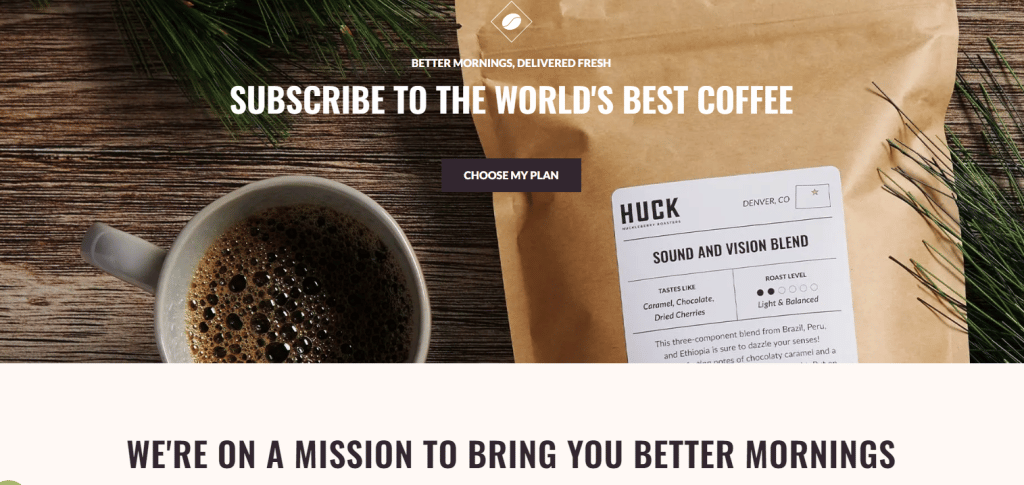
Beanbox is a renowned online coffee subscription that aims to serve its customers the best coffees from around the world.
On their website, two texts stand out because they’re in all caps. The first text communicates to customers about the brand’s reputation for being the best at what they do. The second introduces its value proposition and talks about what they hope to help its customers achieve
- Problem: Making good coffee available in the mornings.
- Solution: Online coffee subscription.
-
Birchbox
“Beauty for Real Life”
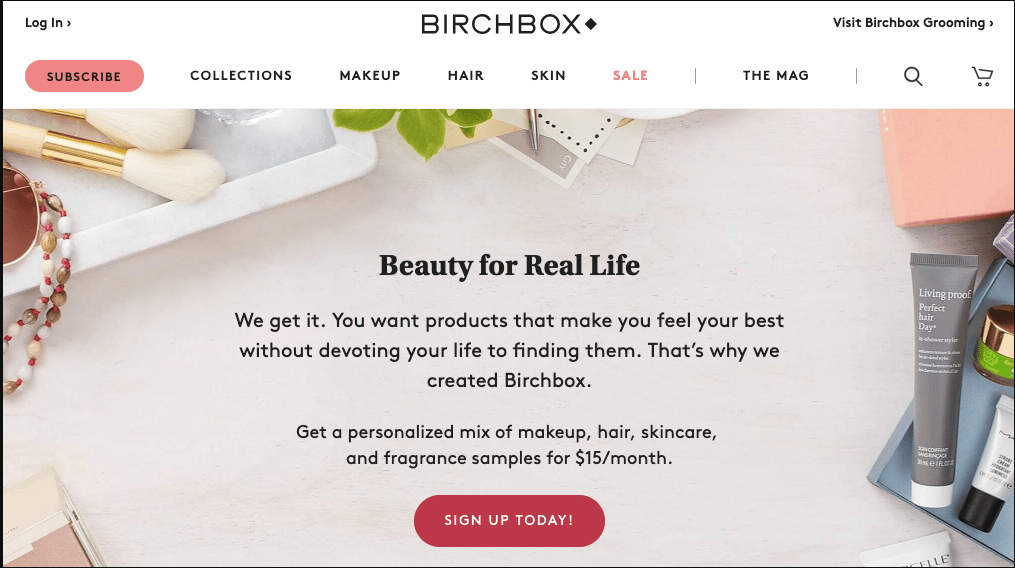
Birchbox is a new-york based beauty brand that operates on a monthly subscription service where subscribers get boxes of three or more beauty products based on their subscription. Their value proposition has everything their customers need to know and understand about their services and the value they offer.
- Problem: Wasted time searching for the right products
- Solution: Subscription service that ensures customers get personalized products.
-
Dropbottle
“Water with benefits, Drink your vitamins.”
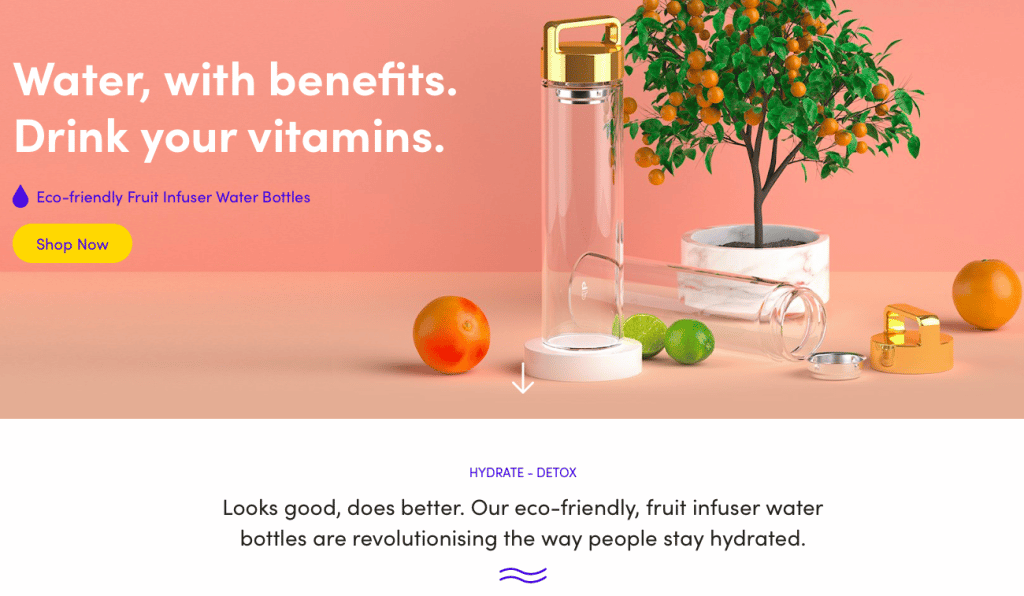
Dropbottle is a fruit-infused bottle manufacturing company that produces eco-friendly, reusable glass bottles designed to carry around daily. The fact that their product is eco-friendly is already appealing to environmentalists and makes them stand out from the crowd.
- Problem: Reduce plastic waste by designing bottles that can be carried around easily.
- Solution: An eco-friendly bottle that customers can conveniently carry around.
-
Harry’s
“You deserve a great shave at a fair price.”
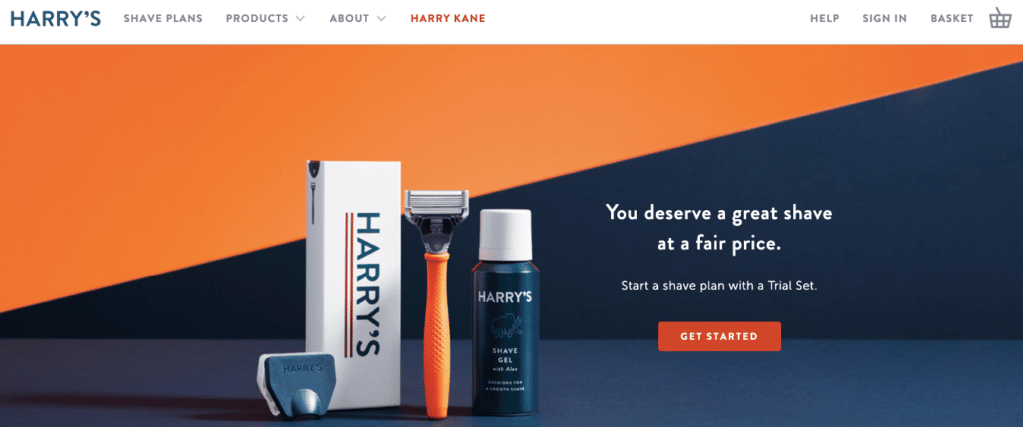
Harry’s is an American company that sells men’s shaving equipment and other personal care products. Harry’s service mode is similar to that of Birchbox, where customers get personalized products based on their subscriptions.
Looking at their value proposition, it does little justice to talking about the quality of their products or who their target customers are. However, they opted to talk about “what” they think their customers deserve at a “fair price.”
This gives customers the impression that they are getting quality products at a great price.
Best Examples of SaaS Value Propositions
-
Figpii
“Too much data and not enough actions, Don’t be data-rich and insight-poor.”
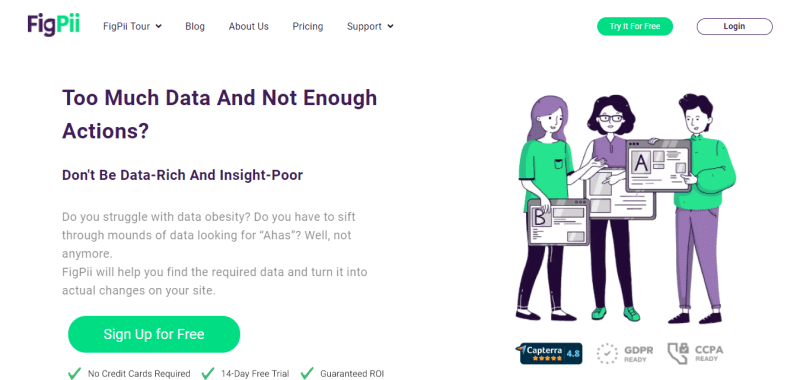
FigPii’s value proposition is directed towards a specific audience in a particular industry, who are ecommerce owners or marketers. These target audiences are looking for a way to get actionable insights from the available data.
Reading further down the line, Figpii clearly states what specific value they offer you as a customer, which is helping you “find the required data and turn it into actual changes on your site.”
Other enticing value propositions offered by FigPii include 14-Day Free Trial than does not require credit card details and a guaranteed return on investment.
-
Shopify
Build an online business –no matter what business you are in”
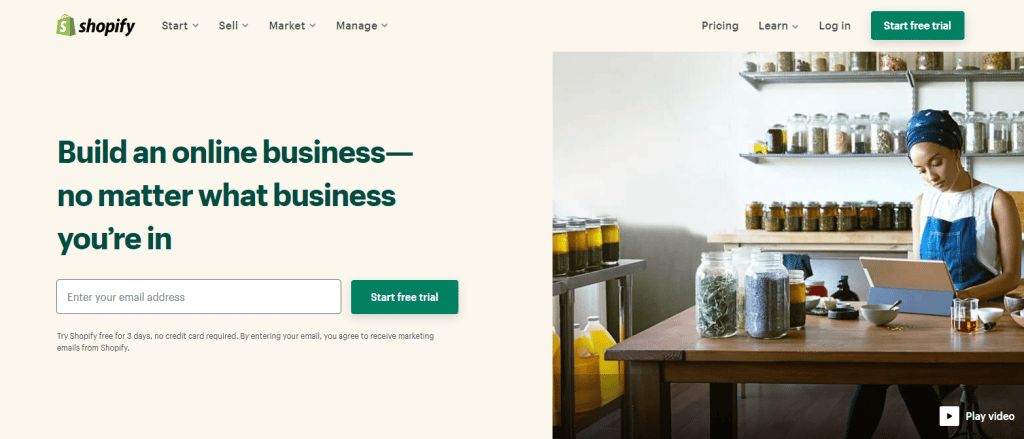
This is a no-brainer! Shopify was created to help anybody anywhere set up an online store to sell their products. Their value proposition is clear and straightforward, and the “Start Free Trial” call to action is also part of their value proposition aimed at attracting more customers.
When you land on this page for the first time, there is no confusion about Shopify’s target audience, its services, and the benefits of choosing its brand.
-
Slack
“Great teamwork starts with a digital HQ. With all your people, tools, and communication in one place, you can work faster and more flexibly than before.”
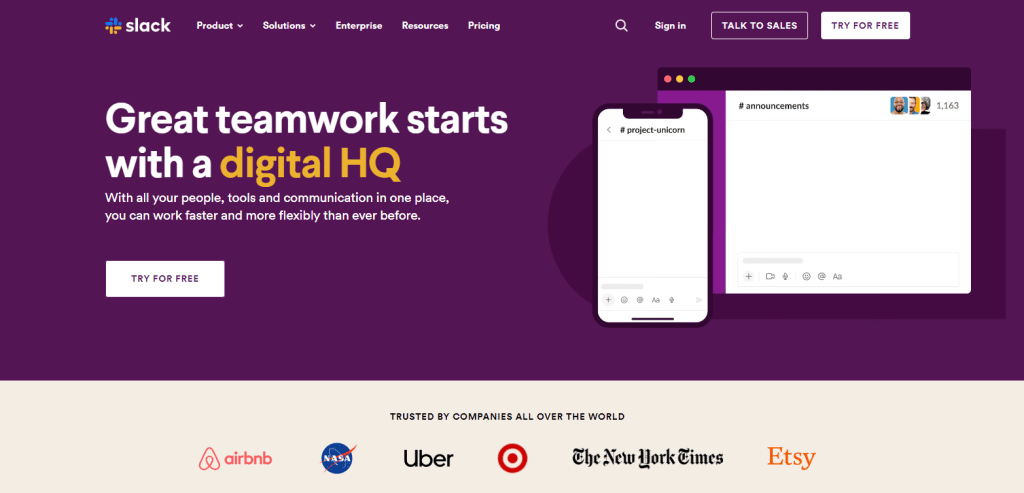
Even before the world adjusted to remote life, slack has been helping millions of businesses to manage communication and collaboration within their company. Their value proposition shows that they care about teamwork and how to help companies foster that.
Slack also offers another value proposition, a free trial, which will likely help them get more users to engage with their product.
-
Evernote
“Tame your work, organize your life.”
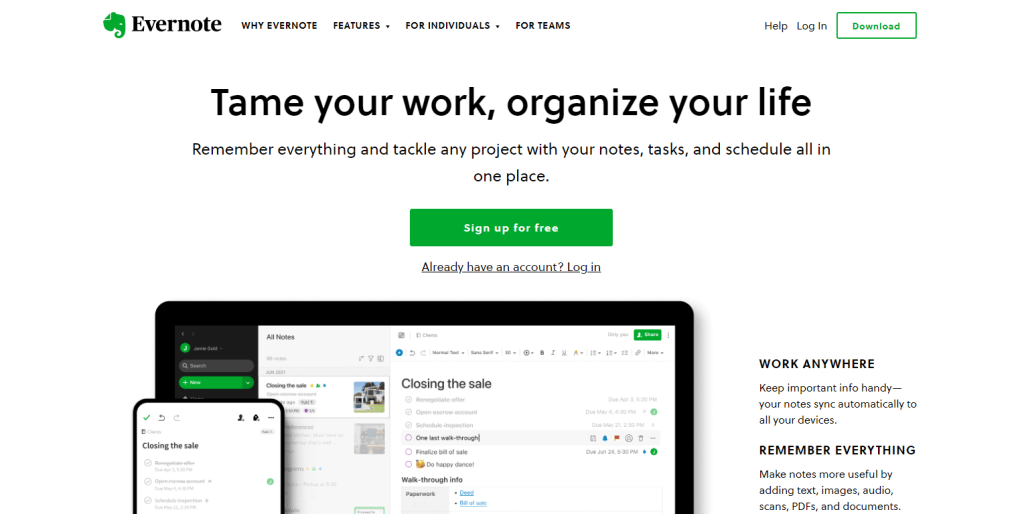
Evernote’s value proposition is a catchy one that communicates the use of its product and service to its target audience. The following line after the main text explains how using their product will help you keep your life organized.
Like most of the value propositions we’ve seen before, Evernote also offers a free trial to its potential customers.
-
Hootsuite
“Grow your reach and get more business with social media; let’s do this.”
Hootsuite’s value proposition focuses on the main benefit that they offer its customers, which is to help grow its business with social media. Straightforward.
Their value proposition also sets them apart from competitors because they help customers get more business with “Social Media” specifically. So, most of the leads they’ll attract are businesses that need to boost their online presence.
Conclusion
Suppose you can craft a compelling value proposition in such a way that it appeals to the needs and wants of your customers and also aligns with your values. In that case, you will likely improve your marketing efforts and increase your conversion rate.

